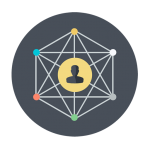Become a data analyst today
Learn how to manipulate, visualize, and analyze data in your field
The premiere data analyst curriculum
You don’t need 100 courses to learn data science, you just need the right ones. This series of courses has been meticulously reviewed and curated by top data science experts and educators to bring you the most powerful data science methods in short lessons that you will be able to directly apply in your job.
Build your data analyst foundation
R programming is the most powerful free data analysis tool used by millions of analysts worldwide. In these courses, you’ll learn how to work with data in the most common formats and build powerful static and interactive visualizations to convey your findings clearly.
Introduction to R and Visualization
Learn how to quickly manipulate data in RStudio, prepare it for analysis, and turn it into awesome visualizations in minutes – all in R, a free, open-source software that is the preferred tool of professional statisticians and data scientists. No background in math or programming required!
Learn the best principles behind data visualization, then learn how to create dynamic data visualizations and embed them into websites or dashboards for your clients. This course also teaches you how to quickly collect data from websites so you can visualize information that you weren’t able to get before.
Intermediate Data Mining and Predictions
Once you have a solid foundation in R, you’ll start digging into data to find new patterns, trends, and relationships. These skills will give you a deeper understanding of your data so you can solve problems faster and see the effects of actions you take. In this series of courses, you’ll learn how to identify new groups and then predict trends with powerful regression techniques.

Clustering and Finding Patterns
Isn’t it time you found those hidden patterns and insights? Learn how to approach various types of data to find patterns, perform different types of clustering analyses, and evaluate the quality of the results. Then automate those processes to save time and exponentially increase your data analysis capabilities.
Regression and Time Series Analysis
Once you’ve found patterns in your data, you need to make forecasts about the future. Many factors can affect the outcomes of sales, political campaigns and product usage. Learn how to apply advanced regression and time series models to create accurate forecasts for your organization and make better decisions when creating your strategies.
Network Analysis And Social Media Mining
Take your data mining to the next level with this network analysis series. Learn how to find hierarchical structures in groups, pull thousands of Twitter records, and predict how a message will spread through a network. You’ll learn how to implement powerful network analysis techniques and know when to implement each one for the results you need.
Introduction to Network Analysis
Learn how to use data science to identify weak points in supply chains and communication channels to prevent failures, identify key and peripheral players to target in your marketing campaigns and generate context from the pattern of connections among people, places and objects.
Mining Social Media + Network Diffusion
How can you best spread a message through a community? Learn how to identify key influencers, determine which connectors are most important to a network, and measure influence and trust. After this course, you’ll know how to create a strategy to spread your message most effectively through a network and test your model in a video simulation.
This course includes a supplement called Mining the Twitter API where you’ll learn how to automatically download thousands of records from Twitter and clean the data.
How do you know who people trust and who they can influence? Learn how to identify communities and like-minded individuals, and use the PageRank algorithm (core piece of Google’s search engine) to measure a person’s significance in their network.
Text Mining and Natural Language Processing
Not all data is numerical – one of the most generated sources of information is through text. This series of courses will teach you how to pull main ideas from documents, classify them according to topic, and build maps to easily understand connections between documents. You’ll understand the most advanced text mining techniques that will significantly reduce the time you spend reading through thousands of papers.

Introduction to Text Mining
In this module we will cover the key concepts upon which all of the text mining is built. Learn how to retrieve large amounts of text programmatically, clean and pre-process text, and understand the structure of our data and how the words are distributed to pull meaning and summaries out of text.
Finding Patterns in Text
Now that you have the basics of text mining, we’ll dive into pattern recognition with advanced unsupervised machine learning techniques to find similar documents and define the number of groups exist in large amounts of text. In addition, learn how to uncover patterns and connections between documents, words, and topics, and then visualize it all to communicate your findings to others.
Topic Models and Sentiment Analysis
Take your knowledge of text to the next level with sentiment analysis. Learn how to analyze a range of sentiments from words to entire paragraphs and documents. You’ll also be able to automatically pull annotations of text and search for people, places, and organizations in the context of the main ideas.
Classification and Prediction
Prediction. The holy grail of data analytics. Classification can predict the behavior of individuals and sort out your customers into pre-determined groups based on their purchasing patterns. In this series of courses, we’ll take you through all the models you need to know to take your data analytics skills to the next level and anticipate your clients’ next moves.

Introduction to Classification
Is a person going to buy your product? Default on their loan? Attend your event? Vote for you? All of these critical questions can be answered with classification algorithms that are a core part of supervised machine learning. They underpin the structures of marketing campaigns, recommendation engines and credit underwriting models. Learn how to use the most powerful classification models in your line of work.










